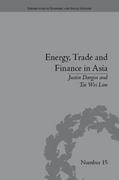Answer the following questions
1. The exchange-rate system that best characterizes the present international monetary arrangement used by industrialized countries is:
a.
Managed floating exchange rates
b.
Adjustable pegged exchange rates
c.
Freely fluctuating exchange rates
d.
Pegged or fixed exchange rate
2. Under a pegged exchange-rate system, which does not explain why a country would have a balance-of-payments deficit?
a.
Foreigners discriminate against domestic products
b.
The domestic currency is undervalued relative to other currencies
c.
Technological advance is superior abroad
d.
Very high rates of inflation occur domestically
3. Which exchange-rate system involves a "leaning against the wind" strategy in which short-term fluctuations in exchange rates are reduced without adhering to any particular exchange rate over the long run?
a.
Freely floating exchange rates
b.
Pegged or fixed exchange rates
c.
Managed floating exchange rates
d.
Adjustable pegged exchange rates
4. Rather than constructing their own currency baskets, many nations peg the value of their currencies to a currency basket defined by the International Monetary Fund. Which of the following illustrates this basket?
a.
IMF tranche
b.
Swap facility
c.
Primary reserve asset
d.
Special Drawing Rights
5. Small nations (e.g., Tanzania) with more than one major trading partner tend to peg the value of their currencies to:
a.
Gold
b.
A single currency
c.
A basket of currencies
d.
Silver
6. Given an initial equilibrium in the money market and foreign exchange market, suppose the Federal Reserve increases the money supply of the United States. Under a floating exchange-rate system, the dollar would:
a.
Appreciate in value relative to other currencies
b.
Be officially revalued by the government
c.
Be officially devalued by the government
d.
Depreciate in value relative to other currencies
Question 2: Suppose that a monopolist can produce any level of output it wishes at a constant marginal (and average} cost of $5 per unit. Assume that the monopoly sells its goods in two different markets that are separated by some distance. The demand curve in the rst market is given by Q1 = 60 P1, and the demand curve in the second {casket is given by, Q2= 100 2P2, {a} (b)- {c} {d} If the monopolist can maintain the separation between the two markets, what level of output should he produced in each market, and what price will be charged in each market? What are total prots in this situation? How would your answer change with respect to the output sold in each market, price charged, and total prots, if transportation costs were zero and the rm was forced to follow a single-price policy? Suppose the rm adopted a w pricing policy where each market as a whole must pay an equal entiy fee for the right to boy from the monopolist (equal to the smallest consmuer surplus in the two markets). In addition the customers in each market must pay a price per unit sold equal to marginal cost. In this case what would be the entry fee, how much would he sold in the two markets, and what are total prots of the monopolist? Suppose the rm adopted a M pricing policy where each market as a whole must pay an equal entry fee for the right to buy from the monopolist (equal to the smallest consumer surplus in the two markets). In addition the customers in each market must pay a price per unit sold and the monopolist designs an \"optimal\" two part tari' where the price is set as to maximize its prots. In this case what would he the entiy fee, what would be the \"optima \" price charged, and how much would be sold in the two markets, and what are total prots of the monopolist? We saw in class that since we are only interested in the ordering of bundles, a positive monotonic transformation (one that does not change the order) of a utility function also represents the same preferences. Mathematically, a positive monotonic transformation maintains the marginal rate of substitution (MRS) of the original utility at any point (X, Y). Prove that the following utility functions represent the same preferences by showing that the MRS of (a), (b) and (c) is exactly the same. (a) U(Qx . Qr) = Q30,-" (b) U(Qx. Qv) = ain(Qx) + (1 - a)In(Qy) (c) U(Qx. Qr) = QxQ- Econ, part a, b and c1. Assume a consumer has as preference relation > represented by u(1, $2) = (ri + 12)" for a E (0, 1) and co > n > 2, with r E C = RY . Answer the follow- ing: a. Show the preference relation that this utility function induces "upper level sets" that are convex -> if U(x) is convex for any Xex b. Show the preference relation these preferences represent are strictly monotonic. c. Give another utility function that generates exactly the same behavior as this one. Prove this is the case. d. Now, let n = 1. Compute the MRS between good 1 and good 2, and explain why it coincides with the slope of an indifference curve. (Hint: using the implicit function theorem for the mapping u(1, $2(21, u)) - u = 0 where u = ru +12 is the level of utility for the partial indifference curve. See Sundaram or later in my lecture 2 slides for a definition/statement of the implicit function theorem...or google it.) e. Write down the consumer's optimization problem, and construct the first order conditions for this problem. f. Define the value function for this consumer (follow my notes in class). g. Now, write down the expenditure minimization problem for this con- sumer, and show from this dual formulation we can obtain the exact same optimality condition that the MRS12 = _ where p is the relative price of good 1 to 2









